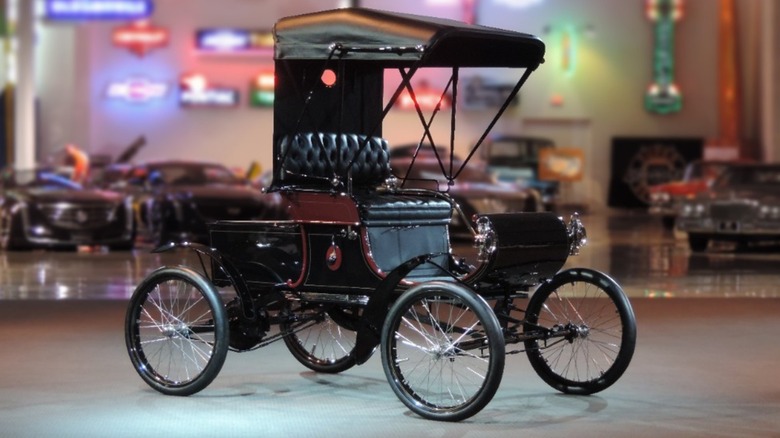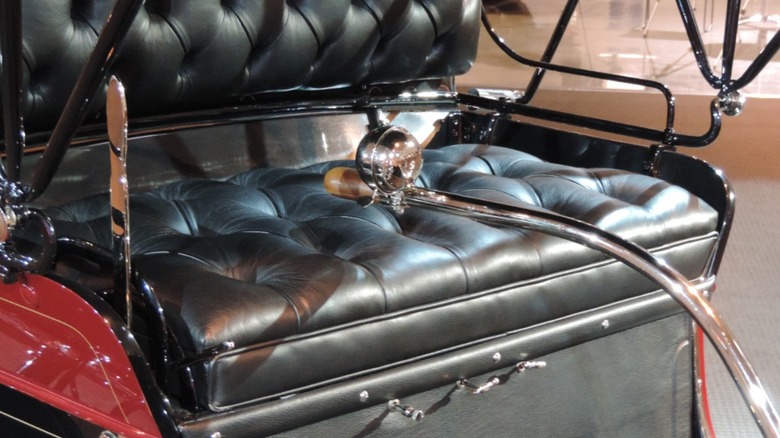
At the turn of the 20th century, following the popularization of the first cars ever invented
by visionaries like Karl Benz, prototypical automobiles were gradually rolling out on the streets of the world, with plucky runabouts gradually beginning to replace horse-drawn carriages. One of the burgeoning companies at the head of this revolution in transport was now-legendary automotive brand Oldsmobile, which began using its official company title in 1900.Building off of the designs of the gas-powered
vehicle developed by company founder Ransom E. Olds, Oldsmobile began its first line of mass production vehicles in 1903 with the Oldsmobile Runabout, also known as the Oldsmobile Model R. Technically, there were other vehicle prototypes in development, but when a fire destroyed the assembly plant in 1901, the Model R was the only one that survived, becoming the winner by default.
In addition to those two names, this early mass-produced vehicle had another name, one reminiscent of the designs of horse-drawn vehicles that came before it: the Curved Dash. The origin of this name lies in the distinctive curved panel at the front of the vehicle, originally used to protect passengers from the debris of the road before playing home to the instruments that would allow a driver to control its movement.
Read more: 7 Used Buick Models You Should Steer Clear Of At All Costs
The Name Comes From The Curved Board At The Front

Before being known as automobiles, the earliest motor-powered cars were frequently referred to as horseless carriages. Remember, at the time, the predominant form of vehicular travel was a horse-drawn carriage, so when people started seeing carriage carts rolling around on their own without a horse, the obvious name that leapt to mind was a horseless carriage.
Interestingly, the Oldsmobile Model R actually cribbed a lot of its basic design tenets from horse-drawn carriages. It was still a young medium of design, so Ransom E. Olds likely didn't even consider that it could be altered or streamlined; he just wanted a carriage that could move without a horse. A byproduct of this is the distinctive curved board at the front of the vehicle.
Originally, horse-drawn carriages would have these curved boards in order to protect passengers' feet from debris and mud being kicked up by the horse trotting along in front of them. This curved dash just happened to serve as a convenient spot to place the Model R's steering and braking mechanisms, so it stuck around for the vehicle's commercial run.
The Oldsmobile Model R is considered the first mass-produced vehicle in America, and it was the most popular automobile in the United States from 1902 to 1905. Perhaps that familiar curved dash helped to endear it to customers who had never seen such a thing before.
Want the latest in tech and auto trends? Subscribe to our free newsletter for the latest headlines, expert guides, and how-to tips, one email at a time.
Read the original article on SlashGear.











